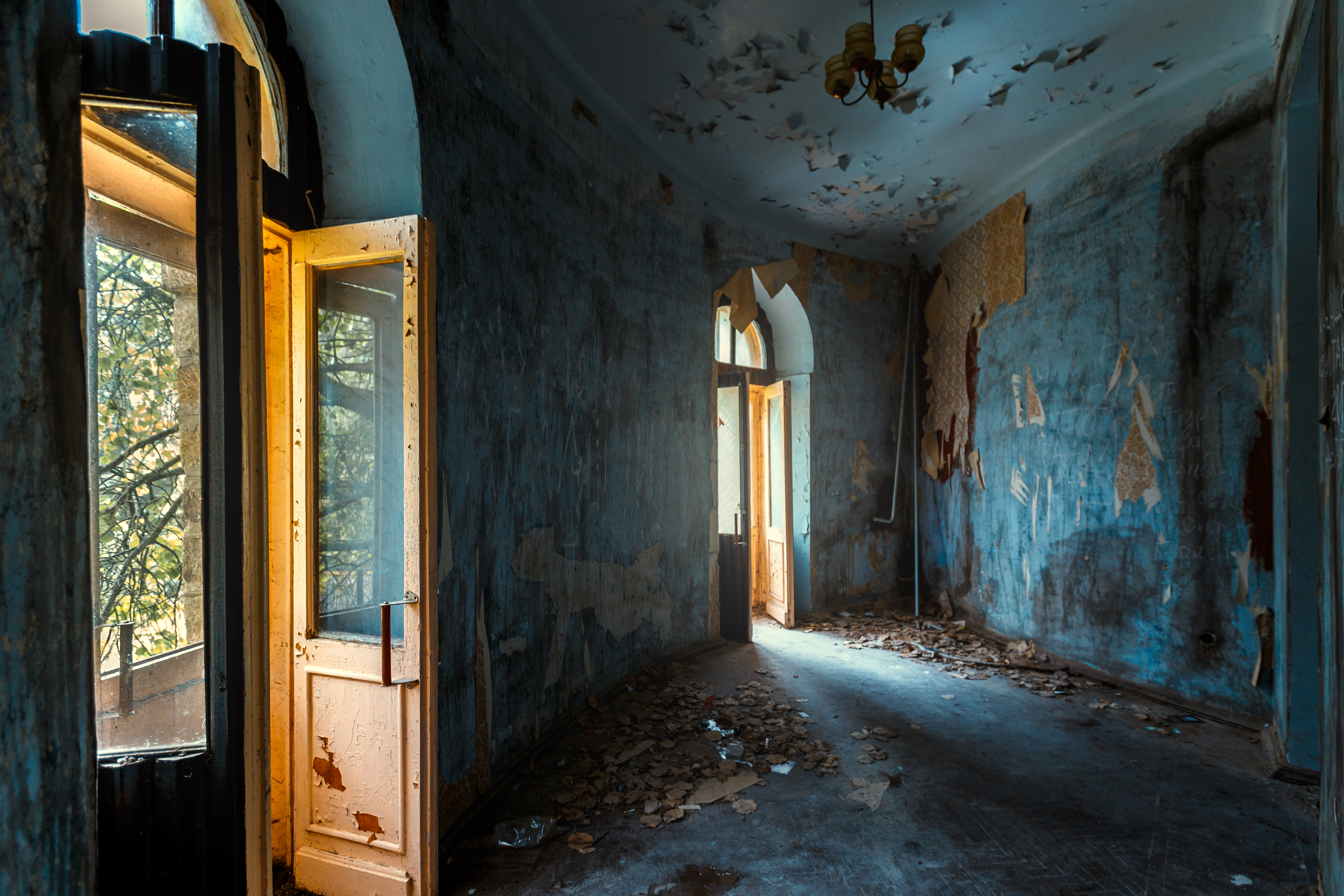The Blue Room

There is a scene in The Blue Room when the protagonist, named Julien Gahyde in the film, pulls back the shutters in the darkened hotel and looks at the sunlit square below. It’s full of light and life, in contrast to the claustrophobic room in which he has just committed adultery. And then the married woman with whom he is having an affair, Esther Despierre, asks him the question that haunts the movie: “Could you really spend your life with me?” She takes his careless, distracted reassurance as a pact between them. After that nothing is the same. He briefly joins a crowd in the sun when he takes his wife and daughter to the beach at Les Sables-d’Olonne on the Atlantic. The blue of the hotel room is echoed in the blue of the courtroom.
There are a few differences between the 1964 novel by the great Georges Simenon and the 2014 film directed by Mathieu Amalric, who also stars as Julien. Simenon’s lead character is Tony Falcone, son of Italian immigrants, born and raised in France; he has a brother who runs the hotel. The film strips him of his brother and his Italian heritage, but his alien status is underlined; the examining magistrate remarks at one point that Julian had left the town for twelve years before he came back, a fact which must have made him something of an “outsider.” Nevertheless Julien sees himself as a respected family man and owner of a small business he has started, living in a house he and his wife have built. He is certain that the precautions he has taken against the discovery of his affair have been effective.
But of course everyone in town knows it. Several men see him running out the back entrance, his shirt untucked, when he sees Nicolas Despierre, her husband, unexpectedly walk across the sunlit square. Many have seen Esther go furtively to the side door of the hotel. His car (parked several streets away so no one will suspect) bears his business logo. No doubt some have also noted the blood-red towel she leaves on her balcony as a signal that she can meet him. The hotel proprietor, the maid who cleans their room, the other hotel employees, the mail clerk at the post office, Julien’s own employees, all know it. Not everyone likes him, either; at trial, all of those who work for him are grudging in their character references, and one even refers to his “shitty house”–a stark, modernist structure surrounded by fields.
Nicolas Despierre dies suddenly. He has been ill for a long time, so there is no surprise, but rather much speculation about what Julien will do now. “Really, Falcone [Gahyde],” says the prosecutor, do you think your wife could not have known what was common knowledge? That she wasn’t waiting, as they were, for what would come next?”1Georges Simenon, The Blue Room, trans. Linda Coverdale (Penguin, 2015), loc. 1116, Kindle edition. Esther begins sending him ambiguous, anonymous notes, which seem to urge him to take care of the obstacle in their way: “You now,” is the last of them, carrying for Julian the implication she had killed her husband and that he must now kill his wife. Soon we see Julien’s wife, Delphine, balanced on a ladder in their living room as she removes Christmas decorations from their ceiling lights. He glances down at the glass-topped coffee table below her. Does he see her falling, cutting herself on the broken glass, bleeding out, allowing him to be with Esther? Yes; and by this time we realize that the possibility terrifies him.
The extraordinary narrative structure of the film is taken directly from Simenon’s novel. At the very beginning of the book we learn that “he was living in the moment, without questioning anything, without trying to understand, without suspecting that one day he would need to understand.”2Simenon, The Blue Room, loc. 60. The scenes as they unfold are intertwined with the questions later put to him by the examining magistrate. His days are lived twice, once naturally, unconsciously, and once again through recall, evidence, and legal scrutiny. As he tells the magistrate, “Life is different when you live it and when you go over it after.”
The film also provides us with an alternate ending, through one quick shot and one malevolent glance. The twist is clever, and it also undermines what we think we know about Esther Despierre. And if we were wrong in this one particular about her, then the film is even more dark than it seems.
Georges Simenon, The Blue Room, trans. Linda Coverdale (Penguin edition, 2015). Kindle edition.
The Blue Room, 2014. Directed by Mathieu Amalric. DVD MPI Home Video.
Photo image from Shutterstock.com.